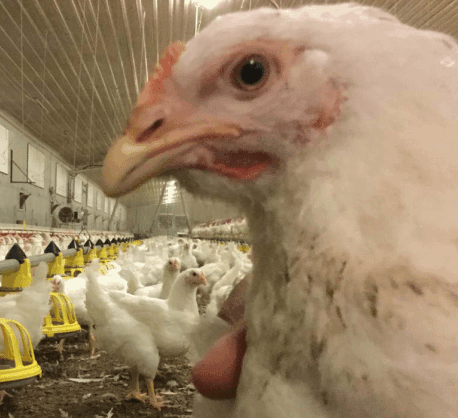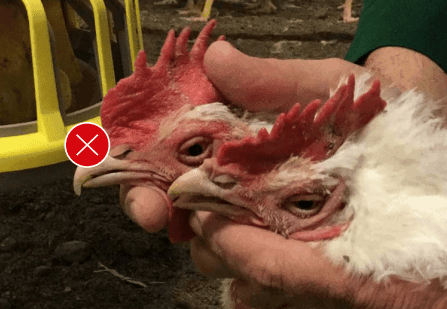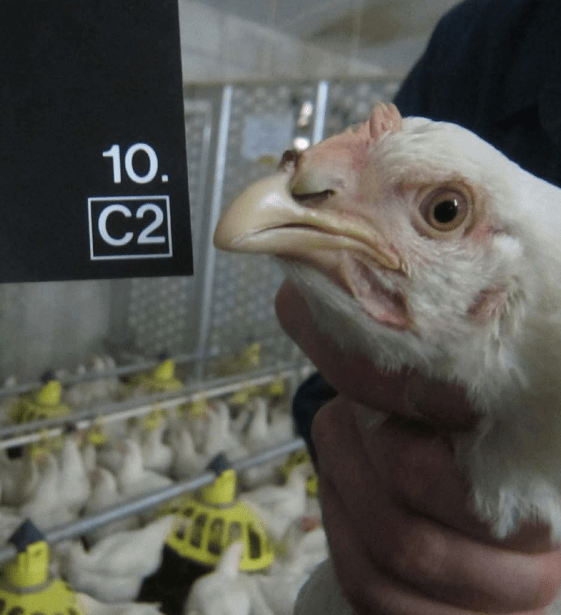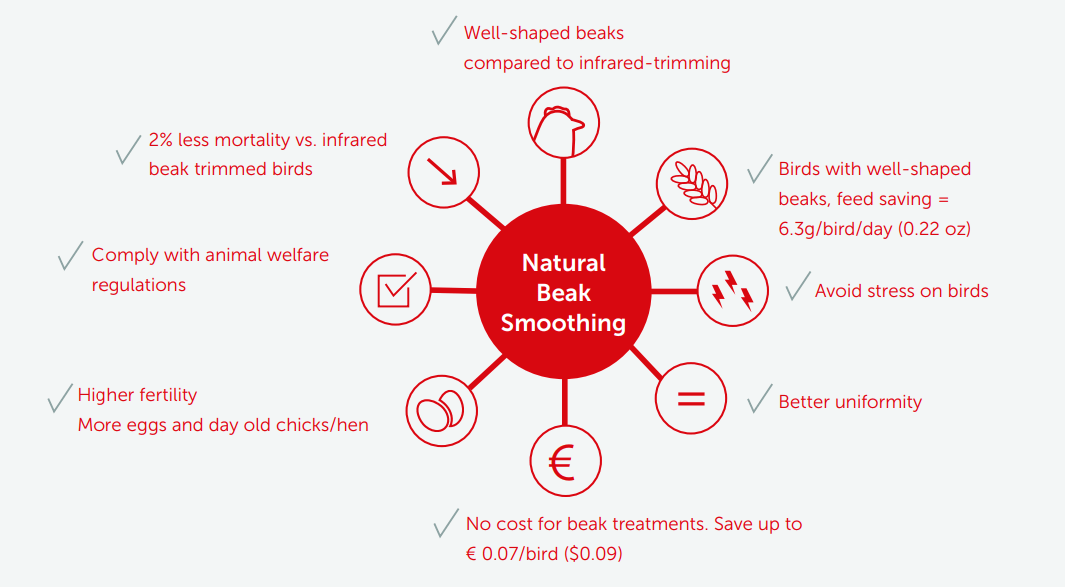



Research into alternatives to beak treatments
A new strategy for animal-friendly beak treatments in Broiler Breeders pt.2Part of Series:
< Previous Article in Series Next Article in Series >
Download the whitepaper
Is no beak treatment a viable alternative?

Chickens peck each other to establish a hierarchy. Also, the mating behavior of a cockerel can cause injury to the back of a hen’s head. In intensive poultry farming this can lead to problems. Feather picking and external injuries can rapidly spiral into cannibalism, making mortality skyrocket. If the situation gets totally out of control, you can lose a third of the group. The financial risks should not be underestimated. Therefore, it’s not without reason that the sector is concerned about stopping beak treatments altogether without an alternative.

The downsides are evident from the tests that Roxell has carried out over the past few years. If there is no beak treatment at all, beaks develop severe overbites and very sharp tips. This leads to extra deaths and an explosive increase in feed waste. Our tests show that a hen without beak treatment drops an additional 9.5 grams (0.34 oz) of feed while eating per day compared with a hen with a treated beak. This is because efficient eating and drinking is hindered by poorly shaped beaks. Ultimately, this has a knock-on effect on the flock’s uniformity.
Five years of research by Roxell
In 2013, Roxell — manufacturer of house equipment — decided to do research into a product innovation that would render beak treatments completely unnecessary.
The question we wanted to answer was: how can we ‘control’ the growth of beaks in broiler breeders in a completely pain-free way while they eat?

An idea developed to integrate a metal file into the bottom of our feeder pans, so every time broiler breeders eat their beaks rub against the file. The birds should have beautifully smooth beaks before the end of the rearing period. Research began at the Roxell Innovations Center in Maldegem (BE) and in a later phase moved to rearing and production houses. We also cooperated with the large breeding companies — Aviagen, Cobb and Hubbard — and integrated their feedback. Following an intensive testing period, this product innovation was shown to work perfectly. We named the solution: ‘Natural Beak Smoothing'
The result = Natural Beak Smoothing for broiler breeders
In 2018, Natural Beak Smoothing was ready to be sold. The method works as follows:
- The bottom of the feeder pan has been fitted with a rough texture made of metal.
- When the chickens eat, their beaks rub against the rough texture of the pan bottom,
- which controls the growth of their beaks in a natural way. As a result, the chickens develop well-formed beaks.
Natural Beak Smoothing can be integrated into each of Roxell’s oval feeder pans for broiler breeders Vitoo and Kixoo.

Roxell’s Natural Beak Smoothing solution is one of the most innovative feeding concepts on the market today.
Results show that the growth of the beaks is kept under control from day one. After fourteen weeks of rearing, the beaks are beautifully smooth. This investment in additional animal welfare also quickly pays off. According to calculations, the extra costs are recouped within two years and often even faster. This is because you save on feed costs, have healthier and more uniform birds, and – eventually – you will have more fertilized eggs (see research results in part 3).
1. The benefits of natural beak smoothing for animal welfare:
- A decline in the risk of infection due to pecking and less stress for the birds.
- No deterioration in young chicks after beak treatment. The general health of the birds is better and more consistent.
- It’s easier for the birds to eat and drink due to the nicely-formed beaks.
- The poultry company is making a sustainable choice for the future by implementing an increased level of animal welfare.

2. The economic benefits of natural beak smoothing:
- The mortality rate is at least 2 % lower.
- Since the beaks are nicely rounded, there is less food wastage. Our results show that you can save up to 6.3 grams (0.22 oz) of feed per animal per day, compared with IR treated hens. By the end of a flock with 12 000 birds, this figure results in feed savings of up to 34 tonnes (37.5 US t).
- Of course, traditional treatments such as mechanical hot-blade debeaking and IR are no longer needed if you opt for Natural Beak Smoothing. These outdated methods are quite labor-intensive and also involve recurrent costs of around €0.07 ($0.09) per bird* .
- A healthier, more uniform group has better fertility rates, which means that more eggs, and ultimately more day-old chicks, are produced per hen.
Three years after this product’s launch, the poultry market is in agreement that it is the perfect alternative to traditional, painful beak treatments.
*costs vary per region and technique










